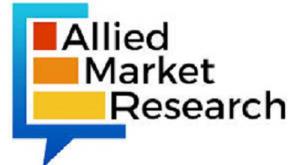Battery Recycling Gains Momentum as Governments Push for Net-Zero Emissions
Battery recycling market grows due to EV demand and pollution concerns, but cost focus and safety issues may restrain growth; policy support drives opportunity.
WILMINGTON, DE, UNITED STATES, June 17, 2025 /EINPresswire.com/ -- According to a new report published by Allied Market Research titled, “Battery Recycling Market by chemistry, source and application: global opportunity analysis and industry forecast, 2021–2030,” the battery recycling market size was valued at $11.1 billion in 2020, and is projected to reach $66.6 billion by 2030, growing at a CAGR of 19.5% from 2021 to 2030.Battery recycling involves the collection of used batteries from various sources such as portable electronic devices, electric vehicles, and industrial energy storage systems. Once batteries reach the end of their life cycle, they are often discarded in landfills, contributing to environmental pollution due to the hazardous materials they contain. Recycling these batteries is essential to minimize ecological harm and promote sustainability. While battery recycling was once viewed primarily as a regulatory obligation, it is now increasingly recognized as a profitable method for recovering valuable metals from different battery types, including lead-acid, lithium-ion, and nickel-metal hydride.
Download PDF Brochure: https://www.alliedmarketresearch.com/request-sample/5576
Market Dynamics
1. Market Drivers
The battery recycling market is primarily driven by the rapid growth in battery usage across various sectors, particularly in electric vehicles (EVs), consumer electronics, and industrial applications. As the global shift toward renewable energy and electrification accelerates, the demand for batteries—especially lithium-ion batteries—has surged. This has led to a parallel increase in used batteries requiring proper disposal and recycling. Environmental regulations and sustainability mandates are also pushing industries and governments to adopt recycling practices to reduce hazardous waste and conserve valuable raw materials such as lithium, cobalt, and nickel.
2. Emerging Opportunities
Battery recycling is transitioning from being a compliance-driven activity to a lucrative commercial opportunity. Advancements in recycling technologies, such as hydrometallurgical and direct recycling methods, have enhanced the recovery rates of high-value materials, making the process more economically viable. Growing investments and collaborations between battery manufacturers, recyclers, and governments are further fueling the development of efficient and scalable recycling infrastructure. Additionally, circular economy initiatives and policies promoting resource efficiency are expected to open up new opportunities for market expansion globally.
3. Key Challenges
Despite its potential, the battery recycling market faces several challenges. One of the major obstacles is the lack of standardized processes for handling and recycling different battery chemistries. Moreover, the collection and transportation of end-of-life batteries remain inefficient in many regions, limiting recycling volumes. Technical complexities in separating and extracting materials from batteries, especially newer chemistries, can lead to higher costs. Furthermore, safety concerns related to handling damaged or unstable batteries pose risks to recyclers and logistics providers, requiring stringent safety protocols and advanced facilities.
4. Market Trends and Outlook
The battery recycling market is witnessing significant innovation and evolution. Companies are increasingly adopting automation, AI-based sorting systems, and environmentally friendly recycling techniques to improve efficiency and reduce the carbon footprint of recycling operations. Partnerships between automakers and recyclers are becoming more common as EV adoption grows. Additionally, governments worldwide are introducing extended producer responsibility (EPR) laws and subsidies to support battery recycling programs. With rising awareness and regulatory backing, the battery recycling market is poised for robust growth in the coming years, playing a crucial role in building a sustainable and secure energy ecosystem.
For Purchase Inquiry: https://www.alliedmarketresearch.com/purchase-enquiry/5576
The battery recycling market is segmented based on chemistry, source, and region. By chemistry, it includes lithium-ion, lead-acid, nickel-cadmium, nickel-metal hydride, and others. Based on source, the market is categorized into automotive, industrial, consumer electronics, and others. Regionally, the market is analyzed across North America, Europe, Asia-Pacific, and LAMEA. This segmentation provides a comprehensive understanding of market trends, material recovery potential, and growth opportunities across various battery types and end-use sectors.
Regional Insights
Asia-Pacific dominates the global battery recycling market, driven by the rapid growth of the electric vehicle (EV) industry, expanding consumer electronics usage, and the presence of major battery manufacturers in countries like China, Japan, and South Korea. China, in particular, leads the region due to its strong government support, regulatory mandates, and investment in advanced recycling technologies. The region's large population and industrial base also contribute to high battery consumption, creating a substantial volume of spent batteries for recycling. Initiatives to establish circular economy frameworks and reduce dependency on imported raw materials are further strengthening the market in this region.
North America and Europe are also key contributors to market growth, fueled by stringent environmental regulations and increasing awareness about sustainable battery disposal practices. In Europe, countries like Germany and Norway are actively implementing extended producer responsibility (EPR) policies and investing in large-scale recycling facilities to support EV adoption. Similarly, North America, led by the U.S., is witnessing increased collaboration between automakers and recyclers to develop closed-loop battery supply chains. These regions are emphasizing technological innovation, safety, and compliance, which are expected to bolster the development of a robust battery recycling ecosystem.
The global battery recycling market analysis covers in-depth information of the major industry participants. The key players operating and profiled in the report include LI-CYCLE CORP., Accurec Recycling GmbH, Battery Solutions, Redwood Materials, Inc., Glencore International, Retriev Technologies, Umicore, Enersys, AkkuSer Oy, and Duesenfeld GmbH.
Other players operating in the value chain of the global battery recycling industry are Neometals Ltd., Primobius, Green Li-ion Pvt., Ltd., SungEel MCC Americas, Redux GmbH, and others.
Key findings of the battery recycling market study:
1. Rising Demand for Battery Recycling: The increasing use of batteries in electric vehicles, consumer electronics, and industrial applications is significantly driving the demand for efficient and sustainable battery recycling solutions.
2. Dominance of Lithium-ion Segment: Among battery types, lithium-ion batteries are projected to witness the fastest growth due to their widespread use in EVs and portable electronics, along with high metal recovery potential.
3. Asia-Pacific Leads the Market: Asia-Pacific is the largest and fastest-growing region in the battery recycling market, primarily due to strong manufacturing capabilities, government policies, and increasing adoption of electric mobility.
4. Technological Advancements Fuel Growth: Innovations in recycling technologies, including hydrometallurgical and direct recycling methods, are improving recovery rates and making battery recycling more economically viable.
5. Environmental and Regulatory Support: Growing environmental concerns and stringent regulations regarding hazardous waste disposal are prompting governments and industries to invest in battery recycling infrastructure and policies.
David Correa
Allied Market Research
+15038946022 ext.
email us here
Visit us on social media:
LinkedIn
Facebook
YouTube
X
Legal Disclaimer:
EIN Presswire provides this news content "as is" without warranty of any kind. We do not accept any responsibility or liability for the accuracy, content, images, videos, licenses, completeness, legality, or reliability of the information contained in this article. If you have any complaints or copyright issues related to this article, kindly contact the author above.
Andre Chavez Wins Best Poster Award at Prestigious IEEE Photovoltaic Specialists Conference
Colombian Reggaeton Star Crissin Teams Up With Shaggy for Sizzling International Single 'Call On Me'
AI CERTs® Unveils AI+ Educator™ Certification to Equip Teachers for AI-Enhanced Classrooms
Kalendarium
Więcej ważnych informacji
 Jedynka Newserii
Jedynka Newserii

 Jedynka Newserii
Jedynka Newserii

Farmacja

Zagrożenie krztuścem pozostaje najwyższe od ponad trzech dekad. Odporność utrzymuje się do 10 lat po szczepieniu
W ubiegłym roku na krztusiec zachorowało ponad 32 tys. osób. To ok. 35 razy więcej niż rok wcześniej. Ostatnie tygodnie przynoszą wyhamowanie tendencji wzrostowej, ale Główny Inspektor Sanitarny przestrzega przed tą groźną chorobą i wskazuje na konieczność szczepień u dzieci już w okresie niemowlęcym i szczepień przypominających u dorosłych. Dużą rolę w promowaniu tej jedynej formy profilaktyki odgrywają pielęgniarki, które nie tylko informują o korzyściach ze szczepień, ale też mogą do nich kwalifikować.
Bankowość
Zdaniem 80 proc. Polaków ceny nieruchomości są wysokie lub bardzo wysokie. Mimo to i tak wolimy posiadać na własność, niż wynajmować

Tylko 26 proc. Polaków uważa, że mamy obecnie dobry moment na zakup nieruchomości. Dla ośmiu na 10 ankietowanych ceny nieruchomości są obecnie wysokie lub bardzo wysokie. 65 proc. ocenia też, że niewiele osób z ich otoczenia może sobie teraz pozwolić na zakup mieszkania lub domu – wynika z badania „To my. Polacy o nieruchomościach” portalu ogłoszeniowego Nieruchomosci-online.pl.
Transport
Nowe opłaty za emisję CO2 mogą spowodować wzrost kosztów wielu małych i średnich firm. Eksperci apelują o mądre instrumenty wsparcia [DEPESZA]

System ETS2, który zacznie obowiązywać od 2027 roku, nałoży podatek na paliwa kopalne wykorzystywane do ogrzewania budynków czy w transporcie. Koszty w dużej mierze poniosą dostawcy, w tym małe i średnie firmy. – Potencjalny wpływ systemu ETS2 na sektor MŚP w Polsce będzie znacznie mniej drastyczny, niż mogłoby się wydawać. Konieczne jest jednak przygotowanie odpowiednich instrumentów, które wesprą przedsiębiorców w przemianie w kierunku niskoemisyjnym, ale jednocześnie będą unikały podwójnej kompensacji – wskazuje raport WiseEuropa pt. „Wędka czy ryba? Wsparcie dla polskich MŚP w związku z wprowadzeniem ETS2”.
Partner serwisu
Szkolenia

Akademia Newserii
Akademia Newserii to projekt, w ramach którego najlepsi polscy dziennikarze biznesowi, giełdowi oraz lifestylowi, a także szkoleniowcy z wieloletnim doświadczeniem dzielą się swoją wiedzą nt. pracy z mediami.



![Nowe opłaty za emisję CO2 mogą spowodować wzrost kosztów wielu małych i średnich firm. Eksperci apelują o mądre instrumenty wsparcia [DEPESZA]](https://www.newseria.pl/files/1097841585/664-ciezarowki-postoj-foto2,w_85,_small.jpg)





.gif)

 |
| |
| |
|